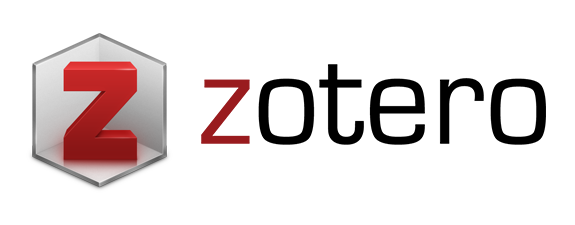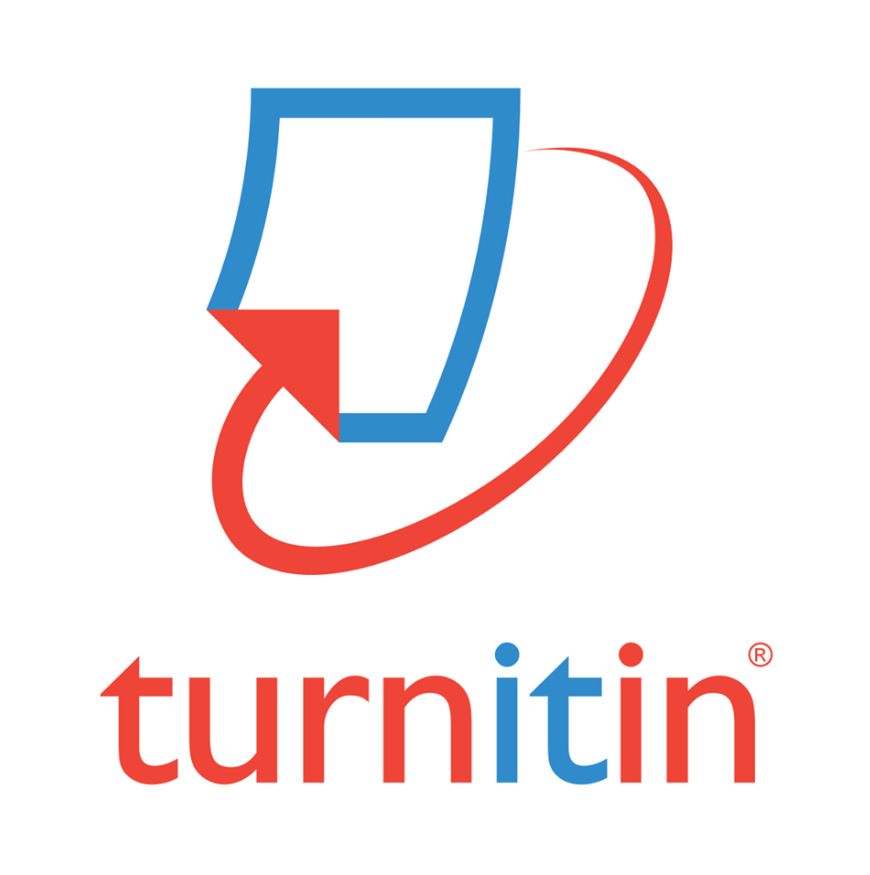Faktor-Faktor yang Mempengaruhi Penerimaan Mahasiswa Terhadap E-Learning Exelsa Moodle dengan Menggunakan Getamel
Abstract
Abstrak: Tujuan penelitian ini adalah menguji penerimaan mahasiswa terhadap e-learning Exelsa Moodle dengan menggunakan General Extended Technology Acceptance Model for e-learning (GETAMEL) yang dikembangkan oleh Fazil dan Rupert. Model GETAMEL digunakan dengan tujuan untuk mengetahui secara spesifik faktor-faktor yang berpengaruh terhadap penerimaan mahasiswa terhadap e-learning Exelsa Moodle. Berdasarkan GETAMEL, terdapat lima faktor eksternal yang mempengaruhi penerimaan mahasiswa terhadap e-learning, yaitu: pengalaman dalam menggunakan komputer dan teknologi informasi, norma subjektif, persepsi kenyamanan dalam menggunakan komputer dan teknologi informasi, kecemasan dalam menggunakan komputer dan teknologi informasi, dan self efficacy. Metode penelitian survey digunakan untuk mengukur variabel dalam GETAMEL. Hasil dalam penelitian ini menunjukan bahwa tidak semua variabel eksternal dalam GETAMEL berpengaruh terhadap persepsi kemudahan dan persepsi kebermanfaatan dalam TAM. Hanya 2 variabel yang berpengaruh yaitu : variabel kenyamanan dalam menggunakan e-learning, hanya berpengaruh terhadap persepsi kemudahan dalam menggunakan e-learning Exelsa Moodle sedangkan variabel self efficacy berpengaruh terhadap persepsi kemudahan dalam menggunakan e-learning Exelsa Moodle dan persepsi kebermanfaatan dalam menggunakan e-learning Exelsa Moodle. Selanjutnya, semua variabel dalam TAM berpengaruh secara signifikan.
Abstract: The purpose of this study was to test student acceptance of Exelsa Moodle's e-learning using the General Extended Technology Acceptance Model for e-learning (GETAMEL) developed by Fazil and Rupert. The GETAMEL model is used with the aim of knowing specifically the factors that influence student acceptance of Exelsa Moodle e-learning. Based on GETAMEL, there are five external factors that influence student acceptance of e-learning, namely: experience in using computers and information technology, subjective norms, perceived comfort in using computers and information technology, anxiety in using computers and information technology, and self-efficacy. Survey research method is used to measure variables in GETAMEL. The results in this study indicate that not all external variables in GETAMEL affect the perception of convenience and the perception of usefulness in TAM. Only 2 variables have an effect, namely: the convenience variable in using e-learning, only affects the perception of ease in using Exelsa Moodle e-learning while the self-efficacy variable affects the perception of ease in using Exelsa Moodle e-learning and the perceived usefulness in using e-learning Excel Moodle. Furthermore, all variables in TAM have a significant effect
Keywords
Full Text:
PDFReferences
Abbad, M. M., Morris, D., & de Nahlik, C. (2009). Looking under the Bonnet: Factors affecting student adoption of E-learning systems in Jordan. International Review of Research in Open and Distance Learning, 10(2), 1–25.
Abdullah, F., Ward, R., & Ahmed, E. (2017). Investigating the influence of the most commonly used external variables of TAM on students’ Perceived Ease of Use (PEOU) and Perceived Usefulness (PU) of e-portfolios. Computers in Human Behavior, 63, 75–90. https://doi.org/10.1016/j.chb.2016.05.014
Agudo-Peregrina, Á. F., Hernández-García, Á., & Pascual-Miguel, F. J. (2014). Behavioral intention, use behavior and the acceptance of electronic learning systems: Differences between higher education and lifelong learning. Computers in Human Behavior, 34, 301–314. https://doi.org/10.1016/j.chb.2013.10.035
Bandura, A. (1977). Bandura (1977). Pyschological Review, 84(2), 191–215. https://doi.org/10.1037/0033-295X.84.2.191
Brown, I., & Inouye, D. K. (1978). Learned helplessness through modeling: The role of perceived similarity in competence. Journal of Personality and Social Psychology, 36(8), 900–908. https://doi.org/10.1037/0022-3514.36.8.900
Chen, H. R., & Tseng, H. F. (2012). Factors that influence acceptance of web-based e-learning systems for the in-service education of junior high school teachers in Taiwan. Evaluation and Program Planning, 35(3), 398–406. https://doi.org/10.1016/j.evalprogplan.2011.11.007
Cheng, Y. (2011). Antecedents and consequences of e‐learning acceptance. Information Systems Journal, 21(3), 269–299. https://doi.org/https://doi.org/10.1111/j.1365-2575.2010.00356.x
Cheng, Y. M. (2011). Antecedents and consequences of e-learning acceptance. Information Systems Journal, 21(3), 269–299. https://doi.org/10.1111/j.1365-2575.2010.00356.x
Cohen, J. (1992). A power primer. Psychological Bulletin, 112(1), 155–159.
Davis. (1989). Perceived Usefulness , Perceived Ease of Use , and User Acceptance of. Management Information Systems Research Center, 13(3), 319–340.
Davis, F. (1985). A Technology Acceptance Model for Empirical Testing New End User Information Systems: Theory and Results. https://doi.org/oclc/56932490
Engelbrecht, E. (2005). Adapting to changing expectations: Post-graduate students’ experience of an e-learning tax program. Computers and Education, 45(2), 217–229. https://doi.org/10.1016/j.compedu.2004.08.001
Fazil, A., & Rupert, W. (2016). Developing a General Extended Technology Acceptance Model for E-Learning (GETAMEL) by analysing commonly used external factors. Computers in Human Behavior, 56, 238–256. https://doi.org/10.1016/j.chb.2015.11.036
Fishbein, M., & Ajzen, I. (1975). Belief, attitude, intention, and behavior: An introduction to theory and research. Addison-Wessley.
Ghozali, I., & Latan, H. (2014). Partial Least Squares Konsep, Teknik, dan Aplikasi Menggunakan Program Smart PLS 3.0 Untuk Penelitian Empiris. Badan Penerbit Universitas Diponegoro.
Igbaria, M., & Parasuraman, S. (1989). A Path Analytic Study of Individual Characteristics, Computer Anxiety and Attitudes toward Microcomputers. Journal of Management, 15(3), 373–388. https://doi.org/10.1177/014920638901500302
Kerka, S. (1999). Distance Learning, the Internet, and the World Wide Web. Eric Digest, 1–7.
King, W. R., & He, J. (2006). A meta-analysis of the technology acceptance model. Information and Management, 43(6), 740–755. https://doi.org/10.1016/j.im.2006.05.003
Lee, Y. H., Hsieh, Y. C., & Chen, Y. H. (2013). An investigation of employees’ use of e-learning systems: Applying the technology acceptance model. Behaviour and Information Technology, 32(2), 173–189. https://doi.org/10.1080/0144929X.2011.577190
Lee, Y. H., Hsieh, Y. C., & Ma, C. Y. (2011). A model of organizational employees’ e-learning systems acceptance. Knowledge-Based Systems, 24(3), 355–366. https://doi.org/10.1016/j.knosys.2010.09.005
Mohammadi, H. (2015). Investigating users’ perspectives on e-learning: An integration of TAM and IS success model. Computers in Human Behavior, 45, 359–374. https://doi.org/10.1016/j.chb.2014.07.044
Park, S. Y. (2009). An Analysis of the Technology Acceptance Model in Understanding University Students’ Behavioral Intention to Use e-Learning. Journal of Educational Technology & Society, 12(3), 150–162.
Park, Y., Son, H., & Kim, C. (2012). Investigating the determinants of construction professionals’ acceptance of web-based training: An extension of the technology acceptance model. Automation in Construction, 22, 377–386. https://doi.org/10.1016/j.autcon.2011.09.016
Purnomo, S. H., & Lee, Y.-H. (2012). E-learning adoption in the banking workplace in Indonesia. Information Development, 29(2), 138–153. https://doi.org/10.1177/0266666912448258
Sholihin, M., & Ratmono, D. (2013). Analisis SEM-PLS dengan Warp PLS 3.0 (1st ed.). Andi.
Shroff, R. H., Deneen, C. C., & Ng, E. M. W. (2011). Analysis of the technology acceptance model in examining students’ behavioural intention to use an e-portfolio system. Australasian Journal of Educational Technology, 27(4), 600–618. https://doi.org/10.14742/ajet.940
Šumak, B., Heričko, M., & Pušnik, M. (2011). A meta-analysis of e-learning technology acceptance: The role of user types and e-learning technology types. Computers in Human Behavior, 27(6), 2067–2077. https://doi.org/10.1016/j.chb.2011.08.005
Venkatesh, V., & Bala, H. (2008). Technology acceptance model 3 and a research agenda on interventions. Decision Sciences, 39(2), 273–315. https://doi.org/10.1111/j.1540-5915.2008.00192.x
Venkatesh, V., & Davis, F. D. (2000). A Theoretical Extension of the Technology Acceptance Model : Four Longitudinal Field Studies. Management Science, 46(2), 186–204. https://doi.org/http://dx.doi.org/10.1016/j.proci.2004.08.141
Welsh, E. T., Wanberg, C. R., Brown, K. G., & Simmering, M. J. (2003). E-learning: emerging uses, empirical results and future directions. International Journal of Training and Development, 7(4), 245–258. https://doi.org/10.1046/j.1360-3736.2003.00184.x
Wijaya, A. (2019). Metode Penelitian Menggunakan Smart PLS 03 (1st ed.). Innosain.
Wood, R., & Bandura, A. (1989). Social cognitive theory of organizational management. Academy of Management Review, 14(3), 361–384. https://doi.org/10.5465/AMR.1989.4279067
Yoo, S. J., Han, S. H., & Huang, W. (2012). The roles of intrinsic motivators and extrinsic motivators in promoting e-learning in the workplace: A case from South Korea. Computers in Human Behavior, 28(3), 942–950. https://doi.org/10.1016/j.chb.2011.12.015
DOI: http://dx.doi.org/10.17977/um039v6i12021p275
Refbacks
- There are currently no refbacks.
Copyright (c) 2021 Nicolas Bayu Kristiawan

This work is licensed under a Creative Commons Attribution-ShareAlike 4.0 International License.
Edcomtech: Jurnal Kajian Teknologi Pendidikan published by Department of Educational Technology, Faculty of Education, State University of Malang in Collaboration with Asosiasi Program Studi Teknologi Pendidikan Indonesia (APS TPI) and Ikatan Profesi Teknologi Pendidikan Indonesia (IPTPI) with MoU.
Publisher Address:
Lab. Teknologi Pendidikan, Gd.E2, Lt.1
Fakultas Ilmu Pendidikan Universitas Negeri Malang
Jalan Semarang No 5, Kota Malang Kode Pos 65145
Email: edcomtech.fip@um.ac.id
========================================================================================================
| INDEXED BY | TOOLS | PLAGIARISM CHECK | ARTICLE TEMPLATE |
|

Edcomtech is licensed under a Creative Commons Attribution-ShareAlike 4.0 International License.
Edcomtech Statistics (Since July 13th, 2020)

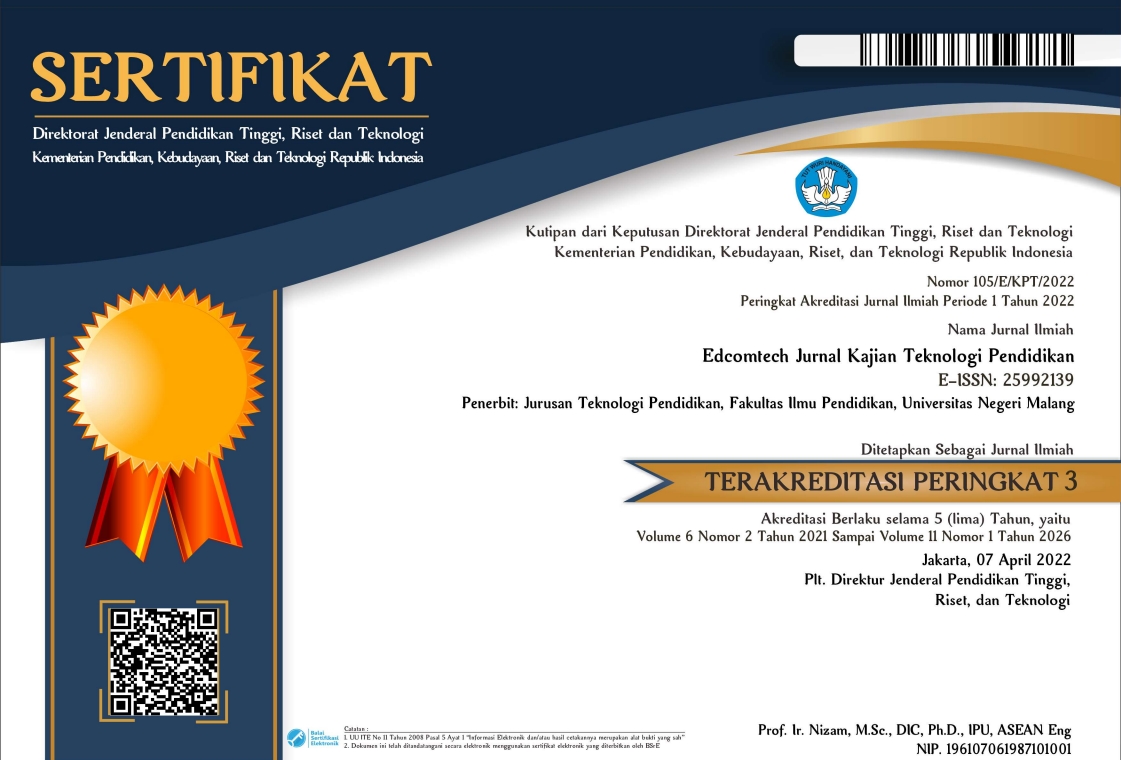
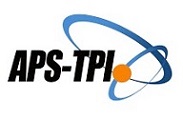



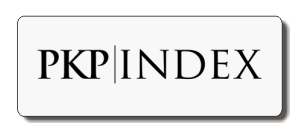




1.png)




